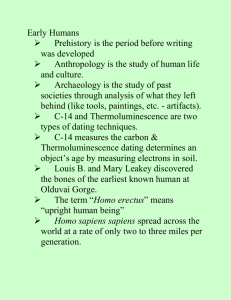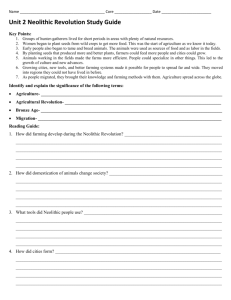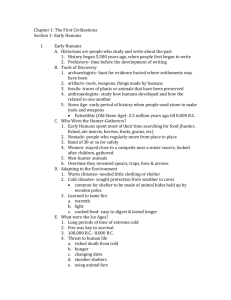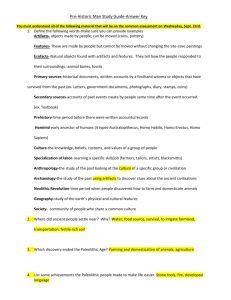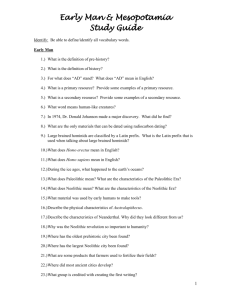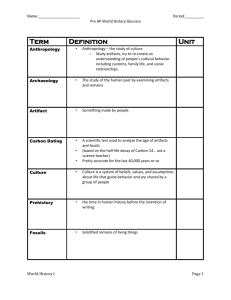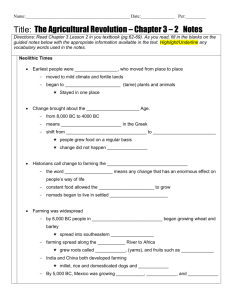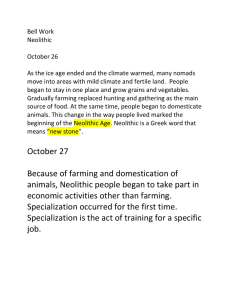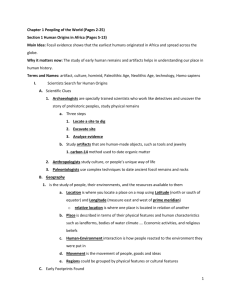Lecture Notes The First Humans: Pre-history
advertisement
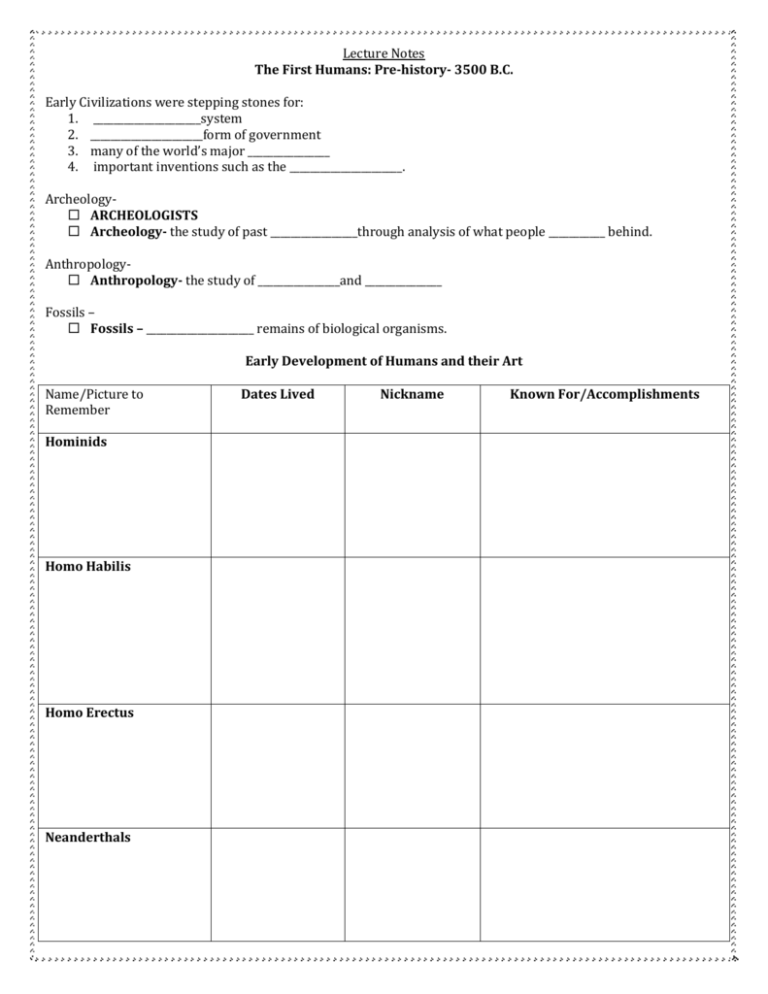
Lecture Notes The First Humans: Pre-history- 3500 B.C. Early Civilizations were stepping stones for: 1. _____________________system 2. ______________________form of government 3. many of the world’s major ________________ 4. important inventions such as the ______________________. Archeology ARCHEOLOGISTS Archeology- the study of past _________________through analysis of what people ___________ behind. Anthropology Anthropology- the study of ________________and _______________ Fossils – Fossils – _____________________ remains of biological organisms. Early Development of Humans and their Art Name/Picture to Remember Hominids Homo Habilis Homo Erectus Neanderthals Dates Lived Nickname Known For/Accomplishments Homo Sapiens Sapiens Paleolithic Way of Life Characteristics of Paleolithic Age: 1. _____________________ B.C. to 10,000 B.C. 2. Humans used simple _____________ tools 3. Often called “_____________________________” Hunting and Gathering: Relied on hunting and gathering Close _______________________ with _______________________ Berries, plants, fruits, nuts, grains Hunted horses, bison, buffalo, fish and shellfish Way of Life: 1. Made stone tools from _______________ o _______________________were most common o ________________________ made them easier to use _______________ were later used Later, invented: o Bow and arrow o Spear o Fish hooks o Bone needles 2. Had to follow animal migrations and vegetable cycles ___________________- people who move from __________ to place to survive. Lived in small groups of 20-30. Hunting depended on careful observation and group cooperation Why was the nomad way of life important? Roles of the Family Women Women: bear and ______________ children; __________________ closer to camp Acquired berries, nuts, grains. _______________ children what was edible. Trapped small animals, kept camp safe Men and women: Main job of people: finding _________________ to eat Parents: passed on ______________ to children to survive Men: Hunt herds of animals Traveled far distances ____________________ Adapting to Survive: Shelter in ___________________caves New types of shelter: Wood with ___________________hides Large bones of ________________________ Use of Fire: ____________________________ was the first Piles of ________________in caves As long as 500,000 years ago Provided Provided: ___________________ ____________________from animals Light ____________________ food Occurred differently at different places and times Ice Ages: 100,000 B.C. __________________was important for survival Thick sheets of ice moved down Europe, America and Asia Serious threat to human life Had to adapt Neolithic Revolution Standard of Living Definition Objective/Subjective Examples Measurements Quality of Life Time period of Neolithic Revolution: ________________ B.C.- _____________________ B.C. Shift from hunting and gathering to __________________ agriculture Began planting ________________ ______________________ animals Can live in settled communities What kind of influence does farming have in our lives? Growing of Crops 1. Southwest Asia- ______________, barley, pigs, cows, ____________, sheep. 2. Spread to South-eastern Europe 4000 B.C.- farming established in Europe and Mediterranean Sea. 6000 B.C.- wheat and barley in Egypt and Africa 1. Yams, bananas 2. Moved to India 5000 B.C. –Meso-Americans 1. Bean, squash, _____________ Cause Effect Settling in small towns and villages Storing surplus products Artisans more skilled Men more active in herding and farming; women cared for children, clothes and home People mastered farming The End of the Neolithic Revolution 4000-3000 B.C. Discovered heating _______________ could turn into ____________ Liquid metal could be made into _______________with molds Use of metal=new _______________ of ___________________ of environment. 1st- ________________ 2nd- Bronze Bronze Age- _______________ B.C. to 1200 B.C. Iron Age- _____________B.C.

